- Qualcomm Launches Snapdragon 4 Gen 2 Mobile Platform
- AMD Launches Ryzen PRO 7000 Series Mobile & Desktop Platform
- Intel Launches Sleek Single-Slot Arc Pro A60 Workstation Graphics Card
- NVIDIA Announces Latest Ada Lovelace Additions: GeForce RTX 4060 Ti & RTX 4060
- Maxon Redshift With AMD Radeon GPU Rendering Support Now Available
ASUS Xonar DX 7.1 Sound Card
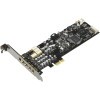
ASUS finally antes up to the bang-for-the-buck table with a value-priced product in their Xonar family of performance audio cards. It’s got a solid feature set, and debuts with ASUS’ new DS3D GX 2.0 environmental DSP, but does it break new ground in the price/performance department?
Page 2 – First Impressions
Unboxing the ASUS Xonar DX is a little less involved than with its more expensive cousins. Instead of the multi-layered PET shell that the Xonar D2 and D2X cards arrive in, the Xonar D2 is packaged in the more traditional cardboard insert, and protected in a Mylar bag to prevent harmful static discharge to the sensitive components.
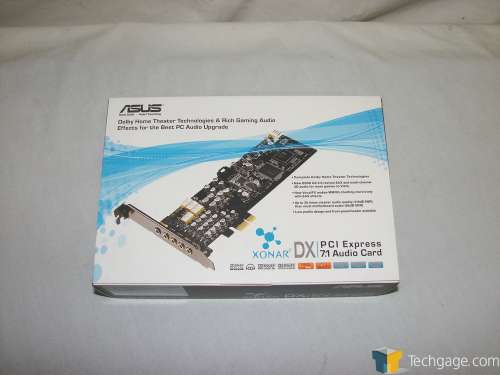 |
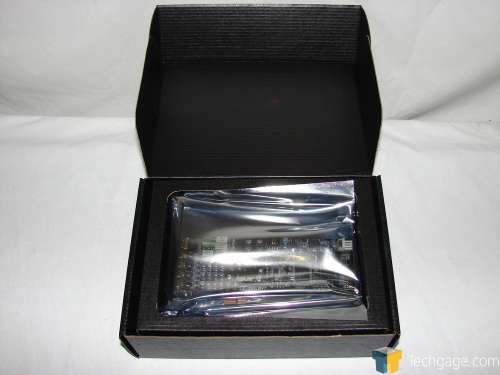 |
Also included in the Xonar package are the instruction manual, the installation disc, a Toslink to mini-optical connector, and a low-profile mounting bracket for use in a slim HTPC or small form factor chassis. The card itself ships with the full-height mounting bracket already installed. ASUS even includes a pair of additional bracket mounting screws for the low-profile bracket, if one should go missing during the exchange. You’ll still need a tiny jeweler’s screwdriver to drive the miniscule screws, however, and care should be taken not to strip the fine threads.
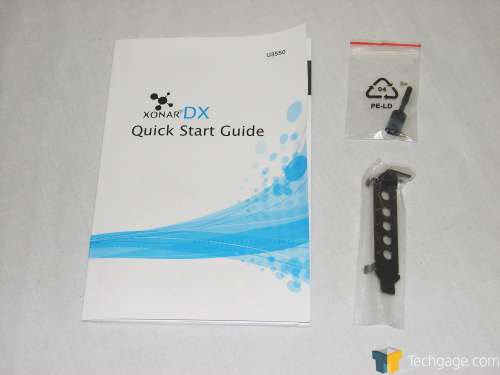 |
The Xonar DX card itself isn’t as spiffy as the D2 or D2X, and it’s lacking the EMI shield. It’s also not as physically massive, being designed for low-profile conversion. Components are mounted to both sides of the circuit board to facilitate the low-profile design.
The circuit board is the same black PCB used for the Xonar D2 and D2X, but the mounting bracket is plated with black chrome instead of gold. The inputs are still gold-plated, however, for low-resistance conduction. There’s not much to differentiate this card from other offerings, with the exception of the large ASUS logo silkscreened onto one face of the card.
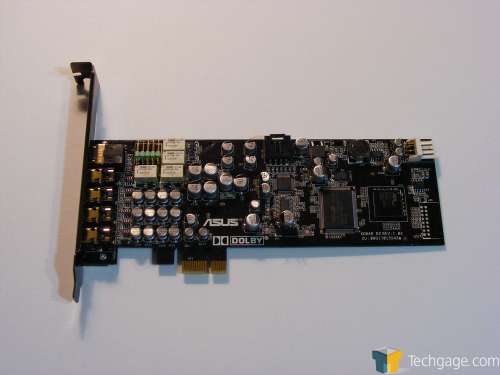 |
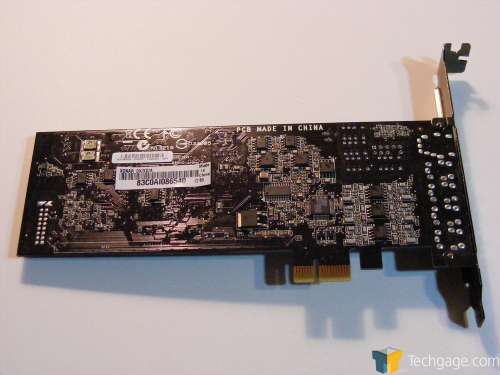 |
ASUS Xonar DX Specifications
- Device Class: High-Definition Audio Device
- Device Interface: PCI-Express 1x
- Audio Processor: ASUS AV100 (C-Media CMI8788 OxygenHD)
- Analog Outputs: 3.5mm mini-jack x4
- Analog Input: 3.5mm mini-jack x1 (shared by Mic In and Line In)
- Front-Panel Header: Intel HD Audio and AC’97 compliant
- Other Line Level Analog Input: Aux-In (4-pin header)
- Digital Input: High-Bandwidth TOSLINK optical transmitter (shared with line-in/microphone jack)
- Audio Playback Sample Rate: 44.1k/48k/96k/192kHz
- Audio Playback Resolution: 16-bit/24-bit
- Audio Recording Sample Rate: 44.1k/48k/96k/192kHz
- Audio Recording Resolution: 16-bit/24-bit
- S-PDIF Digital Output: 44.1k/48k/96k/192kHz @ 16-bit/24-bit, Dolby Digital
- Output SNR: 116dBa (front L/R), 112dBa (other channels)
- Input SNR: 112dBa
- Output THD+N: 0.00056% (-105dB) @ 1kHz (-3dB, front L/R only)
- Input THD+N: 0.0004% (-108dB) @ 1kHz (-3dB, line-in)
- Frequency Response: <10Hz to 48kHz (-3dB, 24-bit/96kHz format)
- Analog I/O Full Scale Voltage: 2 Vrms (5.65 Vpp)
- Driver Features: DirectSound 3D Gaming Extensions (DS3D GX) 2.0, VocalFX, ASIO 2.0, Dolby DSP functionality, DTS Neo:PC
Among the list of specifications for the Xonar DX card, you’ll notice that not all eight channels (front L/R, center, side L/R, rear L/R, LFE) are rated equally for signal-to-noise ratio and total harmonic distortion. With the Xonar D2, ASUS touted identical performance characteristics on all eight analog output channels, but other manufacturers play similar specification games as ASUS does with their value-priced DX card, giving only SNR and THD specs for the front left and right channels, and using lower-quality parts on the output stage for the other six channels.
The Xonar DX is capable of 5vpp swings on its outputs, just like the D2 and D2X, however, so head-philes with high-impedance headphones (my reference Beyerdynamic headphones are rated at a stiff 250 ohms) can expect trouble-free performance, even at high output levels. Also, the Xonar DX manages to pack in an optical digital output jack despite the card’s low profile, though you’ll give up use of the mic/line-in port while using the optical output.
Now that we’ve given the card an initial once-over from a design, specification, and bundle standpoint, let’s take a more in-depth look at the card’s features and onboard components.
Support our efforts! With ad revenue at an all-time low for written websites, we're relying more than ever on reader support to help us continue putting so much effort into this type of content. You can support us by becoming a Patron, or by using our Amazon shopping affiliate links listed through our articles. Thanks for your support!




